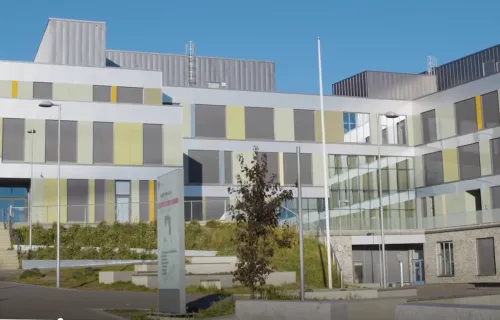A lot has been written and said about digitalisation. And one can expect that more will be written, and even more will be said. Talkers, writers and doers – all are needed simultaneously, some probably more than others.
So, what is it with digitalisation?
My own brain-exploding realisation was triggered by the term “Digital Divide” in the autumn of 1999 during a project* at the World Economic Forum in Geneva. The impact of “digital” emerged over the next five years as I experienced the dot-com bubble burst and participated in several projects, alliances and community activities. It all culminated in 2004 after the launch of Altinn in Dec 2003. (On a personal note: In 1999, time was in short supply; I was husband to a wife in tech and father to two children in pre-school and primary school.)
For me to understand digitalisation, it was important to distinguish between digitalisation and digitisation.
Digitalisation is the process of developing and adopting new behaviours at the organisational and societal levels through the judicious digitisation of practices and materials. Digitisation is the technical conversion of analogue artefacts and interactions to their digital equivalents; the conversion of atoms to bits.
D-I-G-I-T-A-L
Information Technology has clearly contributed to accelerating digitalisation; in Aug 2011, Marc Andreessen explained “Why software is eating the world”. However, “I” and “T” are only two of the seven letters comprising ‘DIGITAL’. So, I created a mnemonic to articulate the implications of digitalisation of enterprises and societies.
‘D’ is for Design Thinking. Design Thinking has mobilised towards a problem-definition mindset that advocates understanding needs as opposed to a solution-building mindset that tends to make more assumptions than is justifiable. The ‘thinking’ is necessary, as it invites cross-disciplinary skills that can unpack the challenges of acting in silos – limitations of industry boundaries or traditional roles. Design Thinking also implies ‘doing’. ‘Design Doing’ encourages fieldwork and demonstrating; it fosters collaboration, stimulates empathy and provides learning. Ultimately, doing generates better thinking and vice-versa. It cultivates a cycle of improvement and learning. (“D” is also for Diversity).
‘I’ is for Information. Data floods devices, servers and data centres; appearing in staggering volumes, velocities and variations. In 2017, The Economist referred to it «the world’s most valuable resource». However, it is information that creates value from data. Information gives data meaning; like a GPS signal meeting a map. Meaning arises when the concepts that the data represents, are described, understood and managed consistently. Information is the lifeblood of a society; it increases coherence when concepts can be used in communication, collaboration and legislation. The flow of information reduces friction in interactions and increases automation in enterprises, societies, sovereign states and transnational collaborations. (“I” is also for Inclusion).
G is for Governance.Governance drives or impedes transparency, trust and ethical behaviours; all depending on the how it is practised. Information can be misused, and activities can evade legislation, at significant costs to enterprises and society. Digitally speaking, data, their sources and sinks and algorithms that manipulate data should be governed judiciously. Managing descriptions of data and algorithms in a responsible and ethical manner, is the keystone of an enterprise’s activity and mission. Ultimately, good governance practised by all entities of a society (public service agencies, for-profit and non-profit businesses) creates transparency in lines of responsibility, encourages agility in practices and ensures accountability and privacy. (“G” is also for grassroots)
I is for Innovation. Innovation is a structured approach about bringing an idea to useful function for its users. The ability to ideate, build and operate useful and usable solutions needs an attitude and behaviours that encourage experimentation and discipline. The attitude and behaviours bring together skills and techniques from different domains in a way that creates a sense of harmony among researchers, designers, developers and operators. A cross-disciplinary harmony that transcends geographical distance and respects the different roles needed to transform an idea to a solution that will be used and operations that allow it to scale. Innovation is less about ideas and business models per se and more about simplification and sustained value generation. (“I” is also for Impact)
T is for Technology. Technology as the application of organised knowledge and skills in the form of products, services, systems and practices covers many categories of concepts. W. Brian Arthur’s basic definition “a means to fulfil a human purpose” in his book on Technology, should suffice for now. Technology spans a broad spectrum; from nanotechnology in ingestibles and new materials to sensors in wearables and all the way to mechtronic humanoid co-bots and industrial robots powered by artificial intelligence. As societies gradually move towards the potential of transhumanism and space exploration, developing technology to bring more humanness to societies is by far our biggest opportunity and our challenge. (“T” is also for Tolerance).
A is for Automation. Automation has simplified society from before the first Industrial Revolution and will accelerate past the fourth Industrial Revolution. Automation has rendered professions and occupations irrelevant as knowledge increasingly gets embedded in the machine. Using mathematical sciences on data offers society an unprecedented degree of automation. From statistics and computational sciences to cryptography and econometrics, the mathematical sciences are driving automation at different levels of scoeity and with varying degrees of impact. Creative marketing and journalism have allowed Artificial Intelligence (AI) to capture the imagination of many including politicians. Our opportunity is to develop new professions, especially those that prevent the automation of human biases. (“A” is also for Altruism).
L is for Learning. «Don’t let education get in the way of learning» is something I heard from my high-school principal. It is something worth remembering, particularly as online course-ware, podcasts and rubber-stamp certifications flourish. As new knowledge emerges, we will have to learn to translate the knowledge to new skills and behaviours. Learning by doing not only provides practical knowledge but also cultivates collaborative behaviours. Just as crucial to learning, is our ability to unlearn and relearn. We must unlearn practices and behaviours that are irrelevant, especially those that solely retain position or tradition. We must understand new concepts and how they relate to what we know from before. Leadership and learning go together; managers, trainers, coaches and educators – all must actively submit to learning and encourage continuous learning among those they manage, train, coach and educate. Leaders, in particular politicians, must create the conditions – time and resources – for learning. (“L” is also for Living).
So what?
I have come to believe that digitalisation boils down to enterprises simplifying the mundane but necessary activities of daily living, so that people have more time to enrich their lives.





